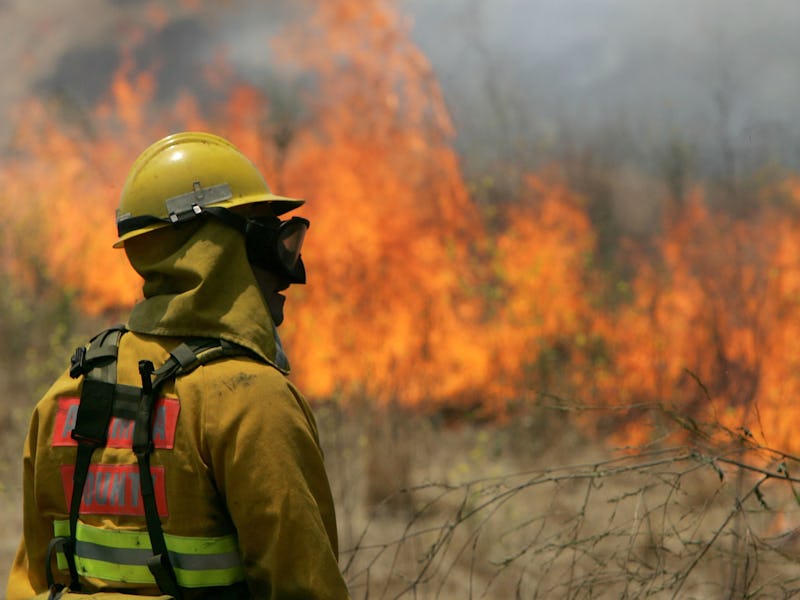These Drones Drop Fire Balls From the Sky
It's all in the name of controlled burning and wildfire prevention.

Researchers at the University of Nebraska-Lincoln want to bring hot, hot balance back to the woodlands — by dropping fire-starting balls from a flying drone that will ignite controlled burns.
A prototype of the tool has the drone carrying a hopper filled with ping pong-sized balls of potassium permanganate, which are injected with glycerol before dispersal. A chemical reaction later — the potassium permanganate oxides the glycerol — and you’ve got yourself a tiny fireball:
Unlike the publicly tumultuous relationship between amateur photography drones and wildfires, UAVs that drop flame balls would actually be welcomed in the fire control community.
The bursts of fire these devices deploy are similar to methods currently used for starting prescribed fires — crucial in preventing the full-on inferno of wildfires by clearing out dead brush before it over-accumulates. Plus, a controlled burn improves the ecological health of forests, allowing jack pines and other resiny trees to open their cones to spread seeds, and curb the spread of invasive plants. The big problem with a controlled burn is that you need someone up close to start it.
Not the case with drones:
“Existing methods for igniting prescribed burns are extremely dangerous in that the majority of people still use driptorches to manually ignite the fires, or for very large scale burns in hard to access terrains, they may use manned helicopters,” Carrick Detweiler, an agricultural robotics expert at the University of Nebraska-Lincoln, tells Inverse. The drones are a project that his UNL Nimbus Lab has been developing for the past year.
With a UAV, people get to stay further away from the hot zone, and it comes at a fraction of the expense of a helicopter. It is, to hear Detweiler describe it, as safe as a fire-starting drone could be. “We can fly the UAV safely very close to the ground, so balls can be dropped within a few feet of the target without trouble.”
What about wayward drones? Should GPS fail, the pilots are trained to step in. “Further, there are redundant systems that will not allow an ignition to take place unless we explicitly command it,” Detweiler says, “and these balls are designed to not easily ignite.”
Should the Federal Aviation Administration approve these drones, the devices will set fire to small brush piles in early spring 2016 field tests, before moving on to bigger and more complex blazes.